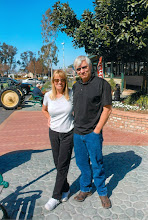My grandmother was full blooded American Indian. That puts me at a quarter. I recently had a DNA test that verified it at 28%. So there must have been a little on my mother's side, too. Our originating tribe was the Wicocomico in Maryland. The tribe was dissolved and our lands taken in 1719. Many of our ancestors made there way south to Kentucky where they assimilated with the Chippewa, Chickasaw, or Cherokee. I grew up thinking we were Chippewa.
As a boy, I looked Indian. My brother looked Indian. One of my sisters looked Indian. My dad looked Indian. As a child, we were raised to be proud of our Indian heritage and my oldest sister (the one that looked the least like an Indian) even wrote a little jingle to the tune of “Harrigan” where one line was “proud of all the Indian blood that’s in me...”
My father, who had been called “Chief” all his life, looks like a full blooded Indian. My great grandmother wanted my father to go to the Indian college and was disappointed when he chose the University of Missouri for their football program instead. To go to Haskell Indian School, you must be a quarter blood and a requirement that was not there when my father was that age, you have to be registered with a tribe recognized by the United States Bureau of Indian Affairs.
When the Indians were defeated and moved to the reservation , every effort was made from that point forward to get the Indians to assimilate into society. There were many who did just that. They got educated and worked hard to move into the white society. It wasn’t easy but they did it. My family saw first hand how there was still discrimination into the late 60's. On one family vacation in particular, we stopped at a resort to see about buying some ice for our camping coolers. My father was told to “go around back.” We all got a big kick out of it. He was the Fire Chief of our small Missouri town at the time.
My family is not registered with any tribe and by all accounts were good Indians and assimilated into society just fine. Although, as a teenager I was called “Little Chief” and while stationed in the Marine Corps in Jacksonville, Florida, was nicknamed “Savage.”
The bad Indians stayed on the reservation and either made no attempt whatsoever to move into the white society or failed and gave up. Either way, they stayed and lived in poverty on the reservations. No one kept records of what happened to the good Indians.
Throughout the sixties to the present we are taught not to discriminate and “tolerance” is the buzz word of the modern era. We associate this not only with the Indian but with blacks, hispanics, jewish people, and orientals. Recently the state of California has officially apologized to the Chinese for the discrimination they suffered when brought to the US as cheap labor to build railroads.
In the 70's Russell Bryan and his wife Helen, a Chippewa couple in Minnesota living in a trailer on the reservation received a property tax bill from Itasca County. They had never received one before and certainly didn’t wish to pay it. Seeking legal relief, they lost in local court, lost in appeals to district and the Minnesota Supreme Court, but won unanimlously on appeal to the US Supreme Court who not only ruled that states lack authority to tax Indians but lack authority to regulate activities on Indian land. This opened the doors for Indian Gaming.
Today, 225 of the 562 recognized tribes have gaming operations and 73 are seeing per capita payments, some as high as top executive level paydays. There are 425 Indian gaming operations in 28 states. (Some tribes have more than one casino.)
The tribes and the US government are very tight lipped about per cap payments. Government and Indian gaming websites talk in percentages of growth increases rather than amounts. Overall, American Indians still live in poverty with an average income per capita less than half of the average american according to the 2000 census. However, http://www.medillnewsdc.com/gambling/gambling_indian.shtml reports that in 2000, the Shakopee Mdewakanton Sioux Community in Minnesota (estimated enrollment is fewer than 300), provides each member with about $75,000 monthly.
The same website shows that the good Indian, now an average American made approximately $21,587 for that same entire year.
July 29, 2009
Thursday, July 30, 2009
Subscribe to:
Post Comments (Atom)

No comments:
Post a Comment